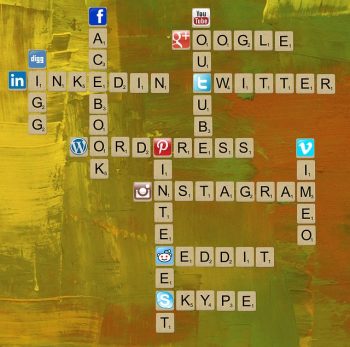Six Most Important Considerations in Creating a Winning Internet Marketing Strategy
The exponential growth of internet marketing leaves many business owners in Sydney wondering what they need to do to maximise their return on investment. Aside from identifying the perfect customer to target, there’s also the challenge of allocating resources to online platforms that will generate the most leads and sales.
The following are six most important considerations in creating an internet marketing strategy to help you achieve your ROI targets whether you’re a new Sydney business or want to take an existing business to a whole new level on the internet.
Clear Definition of Your Customer Avatar
The first step to creating a successful internet marketing strategy for your Sydney business is to define your target audience clearly. The best way to do this is by creating a customer avatar, essentially who you want to market your products or services to.
Business owners often make the mistake of considering anyone and everyone who can use their products or services as their target audience. This makes it difficult to create compelling marketing messages that are specific to a particular group. For example, it’s a lot more effective to market an anti-wrinkle face cream to women over the age of 40, than it is to market the face cream to a 20-year-old.
Once the target audience is clearly identified it’s easier to craft marketing messages around their fears and frustrations, in this case losing their good looks and not appearing as attractive as they once were.
Choosing Appropriate Internet Marketing Platforms
Although you may have a personal favourite, whether it’s Facebook, Twitter, LinkedIn, YouTube or any marketing platform, personal biases should be kept aside when creating your internet marketing strategy. Choose the medium which is actually working in the market.
For instance, if you have a fashion product, you need to have a presence on Instagram because that’s the platform which attracts a large audience of younger women, your ideal prospects. It allows you to showcase your products using both photographs and videos.
Let’s say you are marketing a beauty business. If you go to Instagram and conduct a search using the search phrase beauty products and then click on “people”, you will see plenty of accounts. You’ll also find that almost 90% of the products are for women. If you’re targeting younger women, from let’s say 13 to 25 or maybe 35, Instagram is where your audience is.
To find out whether your ideal prospects are on Facebook, you can log in to your Facebook Ad account and check out Facebook Audience Insights. This will reveal how many prospects you have for your products. Reverse engineering the process in this way will help you decide whether it is worthwhile targeting your audience on Facebook. Most of the internet marketing services companies use this as a major tool.
If your avatar prefers to consume content in regular bite-sized chunks, a blog, a YouTube Channel or podcasts are excellent choices for getting your message across.
Repurposing a blog post into an infographic and publishing it on Pinterest is helpful in targeting people who prefer to view content at-a-glance, rather than read a long blog post or watch a video.
Determining Which Form of Content to Choose
The third step to consider is what kind of content you should use. There are four kinds of content – text, images, video and audio.
There’s no one right or wrong kind of content form to choose from. What’s important though is to always maintain a balance. In saying so, you may want to give greater focus to a particular form of content based on your avatar’s preference. For Instagram, the focus is more on images and video. If you get greater engagement on your blogs, text becomes important.
Of course, nobody likes to read a large chunk of text by itself anymore. Long posts need to provide visual relief through appropriate imagery and if relevant explanatory videos. For example, a blog post on healthy eating can include a video tutorial of a food recipe. If you already have this tutorial on YouTube, all you need to do is copy the link over to your blog post.
Content choices are often governed by the type of industry your business is in. Digital marketing companies may find their avatar consumes a majority of content on YouTube. Businesses in this space can obtain great engagement for their content using short videos that provide actionable internet marketing strategies.
Health and Fitness business owners can also create YouTube or Facebook videos on the subject of daily tips to stay healthy, pre and post workouts pictures and videos. IT companies, manufacturing units and law firms, generally require long-form content such as whitepapers and tutorials which are very detailed.
Eventually, it’s a matter of testing what form of content works in your industry and ensuring you always choose a mix of content forms to cover the needs of your target audience’s preferences in consuming data.
Creating Compelling Content
Nine times out of ten your target audience is searching online for a solution to help them overcome a problem or satisfy an unmet need. So before creating any content, identify the problem which your product or service will help in solving.
Say for example you have a health and fitness product. You can tailor your content to a specific audience, such as women who have recently given birth. Identify the problem a new mother may be facing, and present an ideal solution to remedy the problem in the form of your product.
This way, your target will feel you are talking directly to them and are the answer to their big questions.
You also want your content to be so compelling that they keep returning for more.
To make sure your content is compelling, ask yourself if you would want to read or listen to yourself and share with your friends. Whatever content you create, ensure you conclude with a call-to-action. This need not be a requirement to purchase but could be something as simple as joining your Facebook group or a request to share the content with their friends.
Maintaining Flow through Content Scheduling
Once you’ve created the content and decided on the online platforms to deploy your internet marketing strategy, it’s time to schedule your content so it is published regularly. There’s nothing worse than starting out with great content and leaving your returning audience starved for more.
Considering your primary aim is to develop relationships with the target audience, avoid jam-packing every content piece with promotional posts. As a guide, limit promotional posts to 20% and the rest of the 80% to educate your audience and keep them engaged.
To ensure your content is published regularly, create several content pieces in advance and use a spreadsheet or content calendar to schedule each of these.
Include some “evergreen content” which can be reused on online marketing channels throughout the year. Content such as tips, tactics and frequently asked questions don’t get dated and often get the most traffic.
Measuring and Improving Content Consistently
Finally, once you’ve created and published content on various platforms you now have to find out whether it is working for you or not. Every 7 or 15 days analyse the data to measure performance. Are your videos being watched? Are people bouncing back from your video? Let’s suppose on YouTube you have a video which is 20 minutes long. Out of 100 people watching your video, many will drop off before it concludes. Several might drop out from first minute itself or they might drop off at the 18th minute.
Let’s say the average audience retention is dropping off at three minutes and 50 seconds. You can optimise your future videos, so they are of a similar duration and also time your call-to-action to appear at this point in the video.
If you’re writing a 2000 word blog article, many readers might not consume the entire 2,000 words. They might read a particular part of the blog post which interests them. You can use heat maps to analyse your data and then optimise the post so you focus on the part most people seem to be interested in.
While these are essential steps to creating an internet marketing strategy which will maximise the return on your investment in online marketing, it is important not to skip any of them to get the best results. Further, consistency is the key to success, and it is worthwhile assigning a dedicated team member to implement your internet marketing strategy and monitor its performance. Alternatively, you can consider partnering with a reputed digital marketing agency to help you with online marketing strategy implementation.
Author: Robert

















